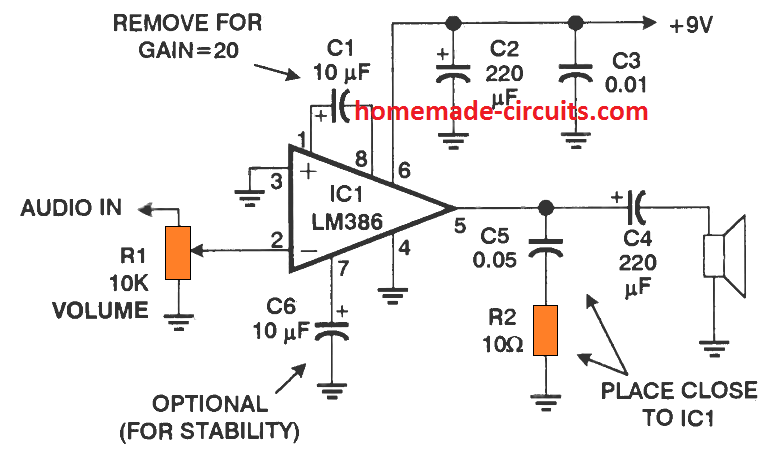Philip_BlueFX
Active member
Hello community. Name's Philip and as you can see I am brand new here.
I'm gonna start off with this little shout out for help from the experienced.
I have this little LM386 based amplifier on breadboard, just messing with my new oscilloscope.

So here's my question.
Input is 1Khz 10V Sine wave.
I plug a 6Ohm, w/e Watt speaker on the output (ohms is as I measure with my DMM. Got no clue on the actual data).
Attached is a picture of the input-output scope. On the left is without the speaker, on the right is with the speaker.
I can not understand how the output amplitude can be lower than the input while the sound volume is significantly louder.
Also, when I first power the amp (without a speaker), I get the left version of the graph, where it looks as if the wave rides on a DC offset. However, when I plug in the speaker, the (what I understand as a ) DC offset disappears and stays this way even if I unplug the speaker.
To clarify. Input is the yellow line and output is the blue line and my supply is 9V through a Twintex bench supply.
I'm gonna start off with this little shout out for help from the experienced.
I have this little LM386 based amplifier on breadboard, just messing with my new oscilloscope.

So here's my question.
Input is 1Khz 10V Sine wave.
I plug a 6Ohm, w/e Watt speaker on the output (ohms is as I measure with my DMM. Got no clue on the actual data).
Attached is a picture of the input-output scope. On the left is without the speaker, on the right is with the speaker.
I can not understand how the output amplitude can be lower than the input while the sound volume is significantly louder.
Also, when I first power the amp (without a speaker), I get the left version of the graph, where it looks as if the wave rides on a DC offset. However, when I plug in the speaker, the (what I understand as a ) DC offset disappears and stays this way even if I unplug the speaker.
To clarify. Input is the yellow line and output is the blue line and my supply is 9V through a Twintex bench supply.















